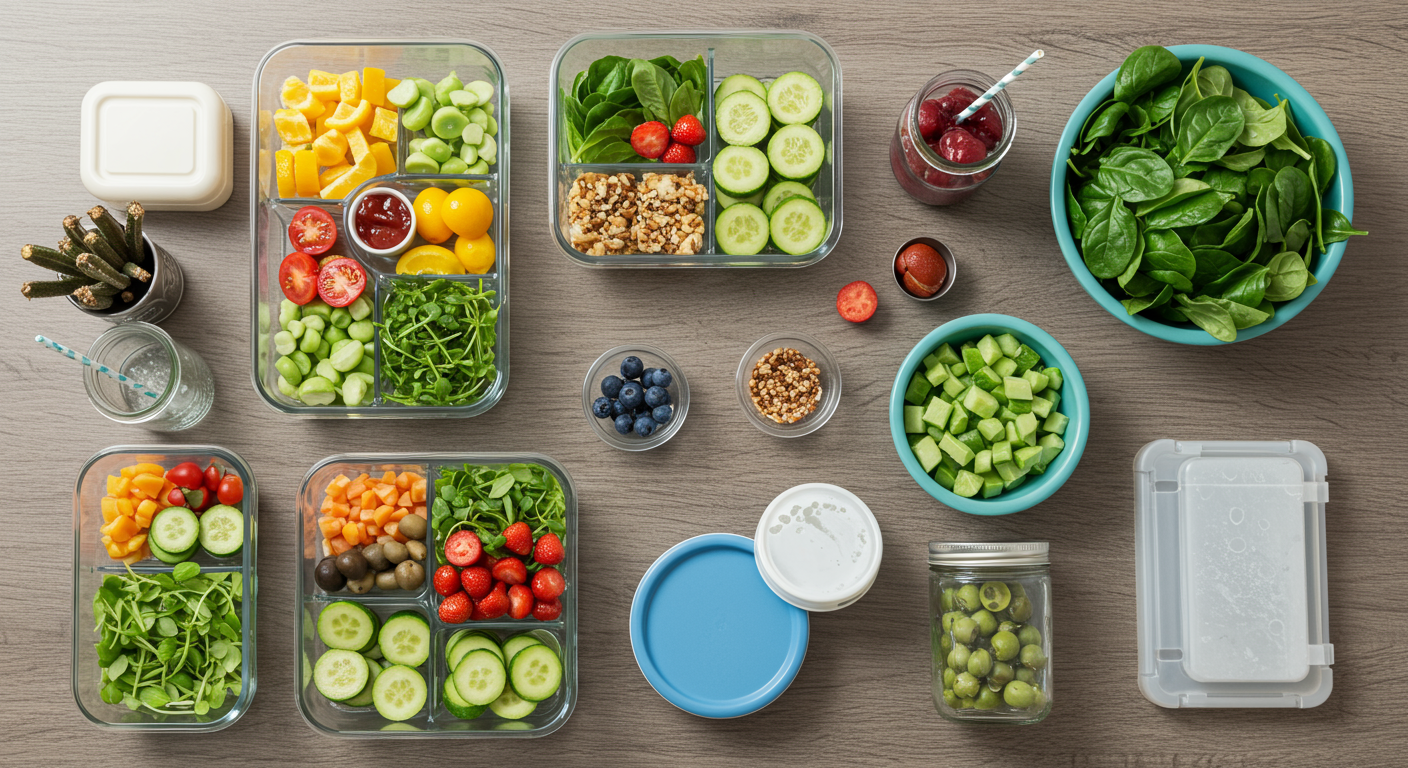Are you ready to take control of your week and eat healthier without spending hours in the kitchen? Welcome to the world of meal prep! This guide is designed for beginner cooks like you, offering seven simple, delicious, and budget-friendly recipes that will transform your approach to healthy eating. Meal prepping isn't just about saving time; it's about making mindful food choices, supporting your weight loss goals, and enjoying delicious, home-cooked meals, even on the busiest weeknights. Let's get started!

Why Meal Prepping This Recipe Saves You Time & Money
Meal prepping is a game-changer for anyone looking to eat healthier, save money, and reduce food waste. By planning and preparing your meals in advance, you eliminate the daily stress of deciding what to eat, avoid impulse takeout orders, and ensure you're consistently consuming nutritious meals. It's perfect for busy professionals, families with kids, and anyone watching their budget. With a little planning, you can have a week's worth of healthy meals ready to go, freeing up your evenings and weekends for things you enjoy.
Ingredients for a Week of Meals
To get started, you'll need some essential ingredients for a variety of meals. Here’s a basic shopping list:
- Proteins: Chicken breasts, ground turkey or beef, eggs, beans (canned or dried)
- Grains: Brown rice, quinoa, whole-wheat pasta, oats
- Vegetables: Broccoli, carrots, bell peppers, spinach, onions, sweet potatoes
- Fruits: Berries, bananas, apples, oranges
- Healthy Fats: Olive oil, avocados, nuts, seeds
- Seasonings: Spices (salt, pepper, paprika, garlic powder, etc.), herbs, sauces (low-sodium soy sauce, salsa)
This is just a starting point. Feel free to adjust these ingredients based on your preferences and dietary needs.
Step-by-Step Meal Prep Instructions
Here are the steps to get you started. Consider these a base and adjust according to the specific recipes below:
- Plan Your Meals: Decide on your meals for the week. Consider breakfasts, lunches, dinners, and snacks. Create a detailed shopping list to avoid unnecessary trips to the grocery store.
- Shop Smart: Buy all your ingredients in one go. Check for sales and consider buying in bulk to save money.
- Prep Your Ingredients: Wash and chop vegetables, cook grains, and portion out proteins. This saves time during the week.
- Cook Your Meals: Use the recipes below to cook your meals. Consider using a Slow Cooker for effortless cooking.
- Portion and Store: Divide your meals into individual containers. This helps with portion control and makes grabbing meals easy throughout the week. I recommend Meal Prep Containers for easy storage.
- Label and Date: Label each container with the meal and date. This ensures you eat the freshest meals first.
Storage Tips for Freshness
- Refrigeration: Most cooked meals can be stored in the refrigerator for up to 4-5 days.
- Freezing: For longer storage, freeze individual portions. Label them with the date and reheating instructions.
- Proper Containers: Use airtight containers to prevent food from drying out or absorbing odors. Meal Prep Containers are your friend!
- Cooling: Always allow food to cool completely before refrigerating or freezing to prevent condensation and preserve quality.
Reheating and Serving Ideas
- Microwave: Most meals can be easily reheated in the microwave. Adjust the time based on the meal and your microwave's power.
- Stovetop: Some meals, like soups and stews, reheat well on the stovetop.
- Oven: Reheating in the oven can help maintain the texture of certain dishes. Be sure to use oven-safe containers.
- Serving Suggestions: Add fresh herbs, a squeeze of lemon, or a side salad to enhance your meals.
Nutritional Information Per Serving
Provide nutritional information, including calories, protein, carbohydrates, and fats for each recipe. You can use a nutrition tracking app like MyFitnessPal to easily calculate this information and include it in your meal prep plan. It's important to know what you're eating to support your weight loss or health goals.
Customizing Your Meal Prep
- Dietary Needs: Adapt recipes to fit your dietary preferences, such as keto, vegan, or gluten-free.
- Portion Sizes: Adjust portion sizes based on your individual calorie needs and activity level.
- Flavor Variations: Experiment with different spices, herbs, and sauces to keep your meals interesting.
- Ingredient Swaps: Feel free to swap out ingredients based on what’s available or your personal preferences.
Advanced Batch Cooking Strategies
- Prep in Batches: Cook large batches of grains, proteins, and vegetables to use in multiple meals throughout the week.
- Embrace Leftovers: Plan your meals around leftovers to minimize food waste.
- Plan for Snacks: Include healthy snacks, like pre-cut veggies with hummus or a handful of nuts, to prevent unhealthy cravings.
- Freezer-Friendly Meals: Prepare freezer-friendly meals like soups, stews, and casseroles in advance for convenient meals.
Next Steps in Your Healthy Cooking Journey
Now that you're armed with the basics of meal prep, it's time to take action! Start by choosing a few of the recipes below and prepping your meals for the upcoming week. Don't be afraid to experiment, make adjustments, and find what works best for you. With consistency and a little planning, you'll be well on your way to a healthier, happier you!